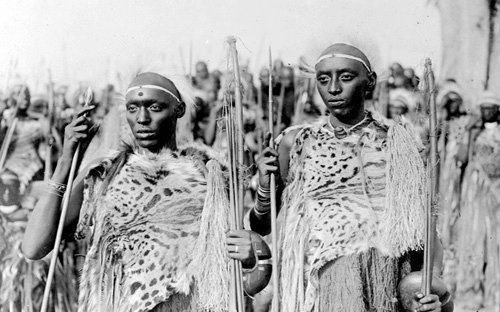The Kingdom of Burundi, located in the Great Lakes region of East Africa, has a rich and complex history that has shaped the culture and traditions of its people. Before colonial times, Burundi was a well-established kingdom, with a monarchy that lasted until the mid-20th century, even after the country's independence in 1962. This article explores traditional life in this kingdom, focusing on social structures, beliefs, cultural practices and political organization.
Social and political organization
The kingdom of Burundi was ruled by a king called "Mwami", who held absolute power. The Mwami was seen as the mediator between men and gods, and possessed both spiritual and political authority. Burundian society was hierarchical, with the nobility, mainly Tutsis, occupying the highest positions. The majority Hutus were mainly farmers, while the Batwa, a smaller group, were often potters or blacksmiths. These distinctions, based on economic and social roles, were reinforced by a complex system of clientelism and mutual dependence.
Religious beliefs and practices
Traditional beliefs in Burundi were centered on ancestor worship and animism. Burundians believed in a supreme being, often associated with the creator spirit, but this entity was not directly invoked in daily life. Ancestral spirits were considered to play an active role in the lives of the living, influencing their destiny in both positive and negative ways. Religious practices included rituals and ceremonies to honor these spirits, as well as the use of fetishes and amulets to attract good fortune or ward off evil spirits.
Culture and crafts
Traditional Burundian culture is particularly renowned for its craftsmanship. Basketry, pottery and woodcarving were highly prized art forms. Pottery, for example, was a specialty of the Batwa ethnic group and played an important role in daily life, particularly in the manufacture of household utensils. Burundian drums, symbols of power and social status, were essential to traditional culture, playing a crucial role in royal ceremonies and rituals. The drum dance, listed as an intangible cultural heritage of humanity by UNESCO, is an emblematic practice that illustrates the richness of Burundian folklore.
Economy and livelihoods
The economy of traditional Burundi was predominantly agricultural. The majority of the population grew crops such as sorghum, maize and sweet potatoes, while livestock breeding, particularly cattle, also played a central role. Cows had an important symbolic and economic value, representing not only a source of food and wealth, but also a symbol of status and prestige. In addition to agriculture, hunting and gathering were practiced by certain communities, notably the Batwa.
Pros and Cons of life in the Kingdom of traditional Burundi
Advantages:
- Cohesive social structure The hierarchical structure of the kingdom favored a form of social cohesion. Clientelist relations ensured a support network between the different social classes.
- Rich cultural heritage Traditional Burundi was rich in culture and tradition, with artistic and musical practices that have survived the centuries. Royal drumming and traditional dancing are key elements that continue to be celebrated today.
- Deep-rooted rituals and beliefs Spiritual beliefs and rituals linked to ancestor worship and animism provided a frame of reference for understanding the world and one's place in society.


No Title
Very nice article. Thank you
No Title
Tru content, we need more research for Burundi clan
No Title
Berry nice news page